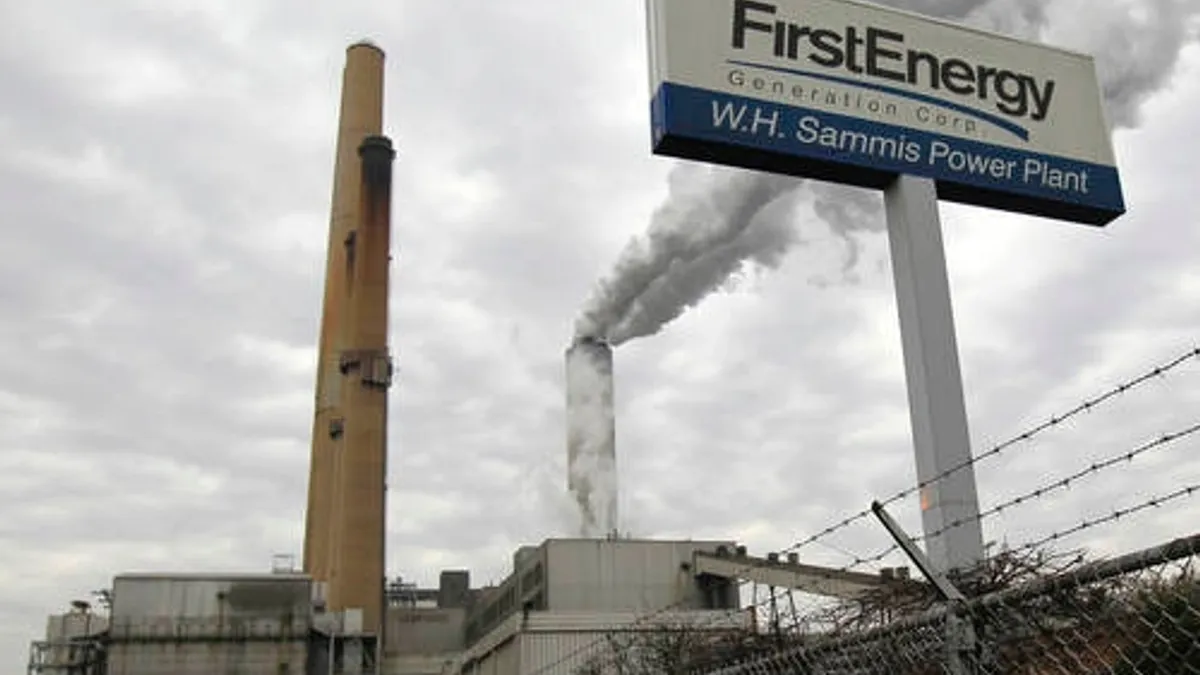Dive Brief:
-
FirstEnergy reported earnings for the first time since separating its competitive generation business from its distribution side and recorded a big gain in the quarter.
-
FirstEnergy reported first quarter earnings of $1.2 billion on revenues of $3 billion, compared with first-quarter 2017 earnings of $205 million on revenues of $2.9 billion.
- FirstEnergy also raised its forecast for 2018 earnings to a range of $3.61 to $3.91 per share and affirmed its full-year operating (non-GAAP) earnings guidance range of $2.25 to $2.55 per share.
Dive Insight:
FirstEnergy’s prospects also were bolstered by an agreement in principle reached on Monday with creditors in the Chapter 11 bankruptcy proceeding of the company's FirstEnergy Solutions (FES) and FirstEnergy Nuclear Operating (FENOC) units. The settlement is intended to fully release FirstEnergy from all claims.
In an April 23 earnings call with analysts, FirstEnergy CEO Charles Jones said the credit agreements will be “credit positive” for the company and “well within the guidelines of both the major rating agencies."
Responding to a follow-up question, James Pearson, FirstEnergy executive vice president of finance, said he sees the company’s credit metrics after the bankruptcy “solidly in the 12% to 13% range,” which he said is well above the thresholds set by Standard & Poor’s and Moody’s Investors Service.
The creditors represent a majority of the outstanding unsecured and secured debt obligations of FES and its related entities. FirstEnergy called the agreement “a significant step toward FES, its related entities, and FENOC ultimately emerging from bankruptcy.”
The April bankruptcy filing fulfills FirstEnergy’s long term strategy of exiting the competitive generation business and transforming itself into a fully regulated business. It is also the culmination of a long drawn out saga relating to the performance of FirstEnergy’s nuclear power plants.
FirstEnergy sought U.S. Department of Energy intervention to shore up the economically ailing plants right up until the bankruptcy filing. FES said it plans to close three nuclear plants — Beaver Valley in Pennsylvania and Davis-Besse and Perry in Ohio — by 2021.
Citing the importance of the nuclear plants to their regional economies, Jones said he would “continue personally to advocate for regulatory or legislative solutions, including FES's application for an emergency order under the Federal Power Act that recognizes the attributes of fuel secure baseload generation.”
“I continued to believe we are doing long-term damage to our nation's infrastructure and I intend to be a steady voice in pushing for more integrated policies and decision-making,” Jones said.
Looking forward, Jones said FirstEnergy is now looking at an 8% combined annual earnings growth rate, which he attributed to “investments such as the distribution platform, modernization in Ohio or the infrastructure investment in New Jersey.”
Jones said FirstEnergy’s Energizing the Future investment program includes more than 600 projects that are either under way or in the pipeline for 2018. “We are on track to invest $1.1 billion in our transmission system this year consistent with the capital plans we announced in February,” Jones said on the earnings call.














